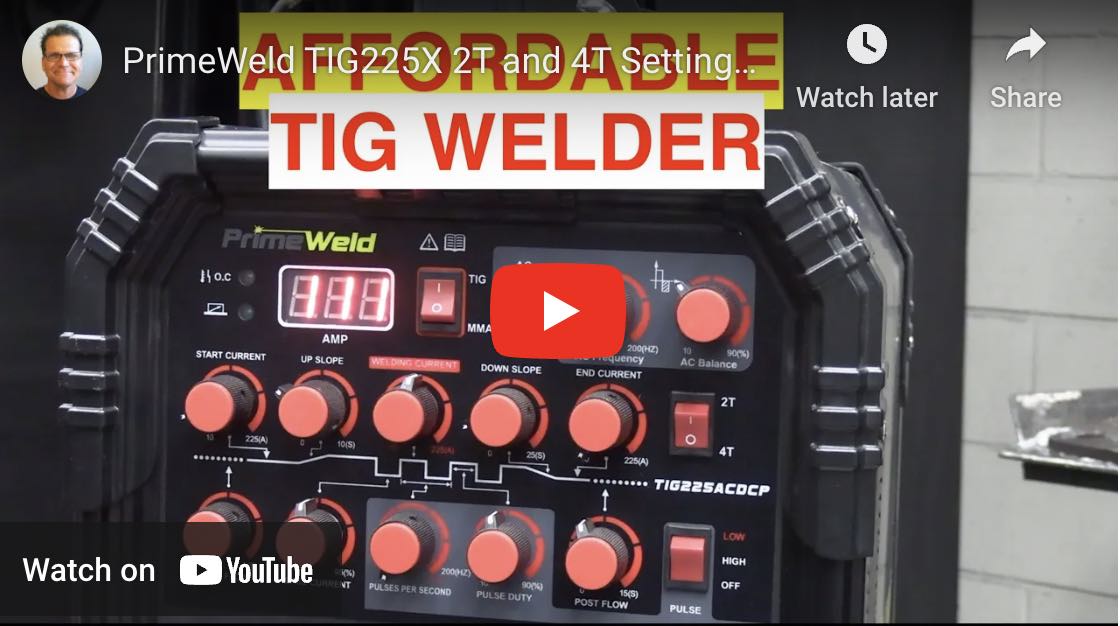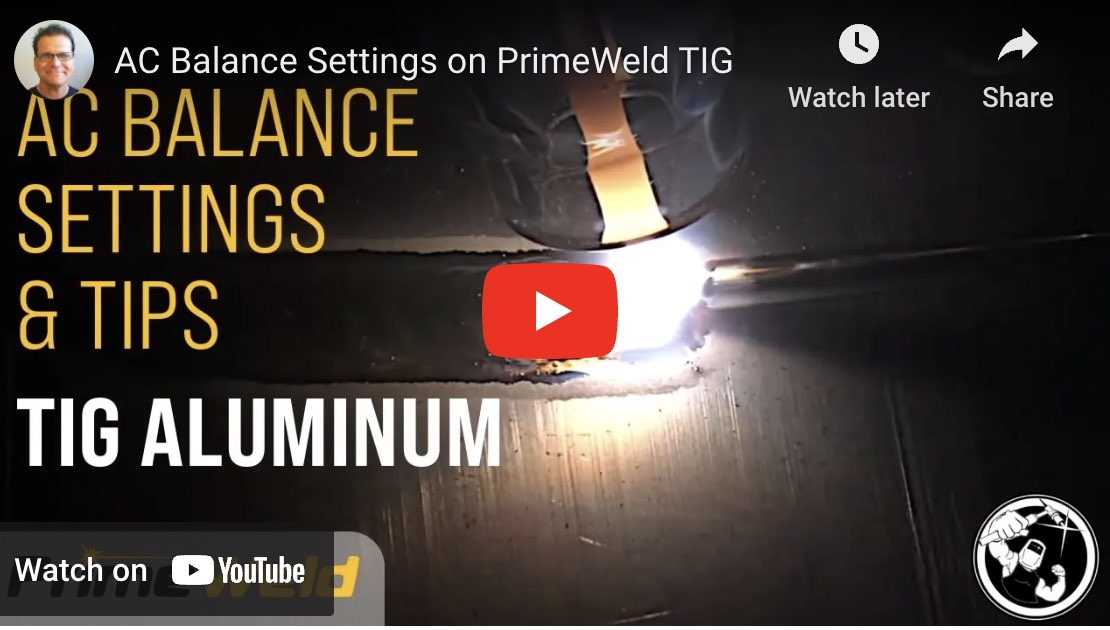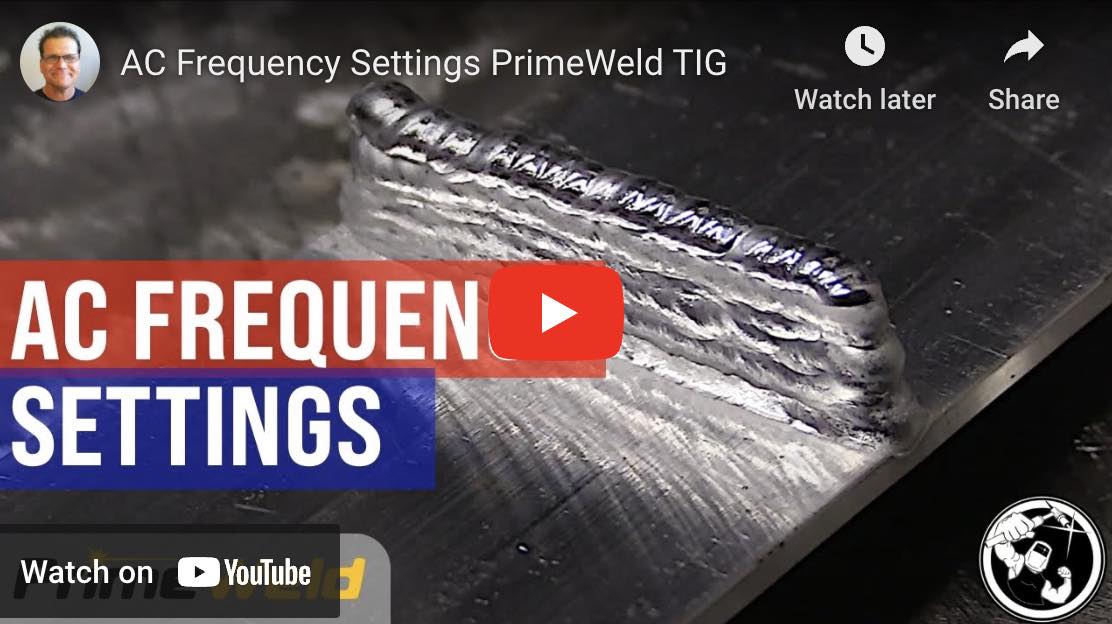AC DC TIG Welding - Videos and down-n-dirty Tips for how to tig weld
Introduction to AC DC TIG welding
- HOME
- TIG WELDING ALUMINUM
- How to Tig Aluminum
- Ac Dc Tig Welding
An AC DC TIG welding machine is capable of welding almost any metal.
carbon steels, chromoly, tool steels, stainless steels, nickel alloys like hastelloy and inconel, aluminum, magnesium, titanium, cobalt, copper, and even grandma's pot metal cookie cutter...can all be welded with an ac dc tig welding machine.
Benefits of an AC DC TIG welding machine over a DC machine.
- not limited on material type it can weld
- doesn't cost much more than a DC tig welder
Not that many years ago, a DC tig welding machine was a good deal cheaper than an AC DC TIG welding machine.
That is not the case anymore. Might as well get the AC feature these days so you will not be limited on material types you can weld.
Tungsten Inert Gas (TIG) welding is a very versatile and precise welding process used in various industries where precise clean welds are needed.
The proper name for TIG is GAS TUNGSTEN ARC WELDING (GTAW).
Everyone still calls it TIG for short.
A tig welding machine utilizes an electric arc formed between a non-consumable tungsten electrode and the workpiece, while an inert gas (usually argon) shields the weld area from atmospheric contamination.
TIG welding machines come in mainly 2 different versions.
- DC only version
- AC DC version.
In this article, we will dive into the working principles of AC/DC TIG welding machines, while highlighting the differences in capabilities between DC and AC current in the welding process.
Direct Current (DC) TIG Welding
DC TIG welding machines operate by using direct current to generate the electric arc. There are two types of DC TIG welding: straight polarity and reverse polarity.
- Straight Polarity (DCSP) is more properly called Direct current electrode negative (DCEN): In DCEN mode, the electrode is negative and the workpiece is positive. The welding current flows from the electrode to the workpiece, creating a stable and focused arc. Straight polarity is primarily used for welding carbon steel, stainless steel, and alloys like 4130 chromoly....pretty much everything but aluminum and magnesium
- Reverse Polarity (DCRP) is more properly called Direct Current Electrode Positive (DCEP): In reverse polarity, the electrode is positive and the workpiece is negative. Welding current flows from the workpiece to the electrode, resulting in the tungsten electrode getting very hot very quickly even at fairly low amperage. There is a cleaning action that occurs on DCEP that helps break up the aluminum oxide that is on the surface of all aluminum. But because DCEP heats up the tungsten so much, Reverse polarity is rarely used for tig welding.
DC welding provides stable arc characteristics and excellent control over arc. It offers a very focussed and small arc, making it suitable for welding things like thin stainless steels.
Alternating Current (AC) TIG Welding
AC DC TIG welding machines, on the other hand also have alternating current, which periodically reverses its direction of flow.
On older design transformer tig welding machines, the frequency of the current's alternation typically ranges from 50 to 60 Hz.
Newer inverter design tig welders often have an AC frequency setting where the frequency of the ac arc can be adjusted higher for a more focussed arc.
AC welding is particularly advantageous for welding aluminum and aluminum alloys, as well as for some magnesium alloys.
Here's how AC TIG welding works:
- Polarity Switching: The AC welding machine cyclically alternates between straight polarity and reverse polarity at a specific frequency. During the positive half-cycle, the electrode becomes positively charged (reverse polarity). The electrode positive part of the AC arc provides what is known as a cleaning action that helps break thru the oxide layer on all aluminum.
- Conversely, during the negative half-cycle, the electrode becomes negatively charged (straight polarity), allowing for more penetration...but no cleaning action.
You might say that AC welding is a mix of both DCEP and DCEN and provides a certain level of cleaning action...but also penetration.
AC current gives you cleaning action from the Electrode Positive cycle without overheating the tungsten as much as DCEP.
Choosing Between a DC tig welder and an AC and DC TIG Welding Machine.
The choice between using a DC tig welder or an AC and DC TIG welding machine boils down to what metal you want to weld.
A DC tig welder is great for certain applications like sanitary stainless tig welding....but is limited in a job shop type scenario where you might need to weld all different metals.
AC welding is primarily suited for aluminum and magnesium alloys due to its ability to clean the oxide layer effectively.
An AC DC tig welder can do it all and I highly recommend owning one.
It's nice when you can do a side job and someone drops a hundred dollar bill in your palm.


















